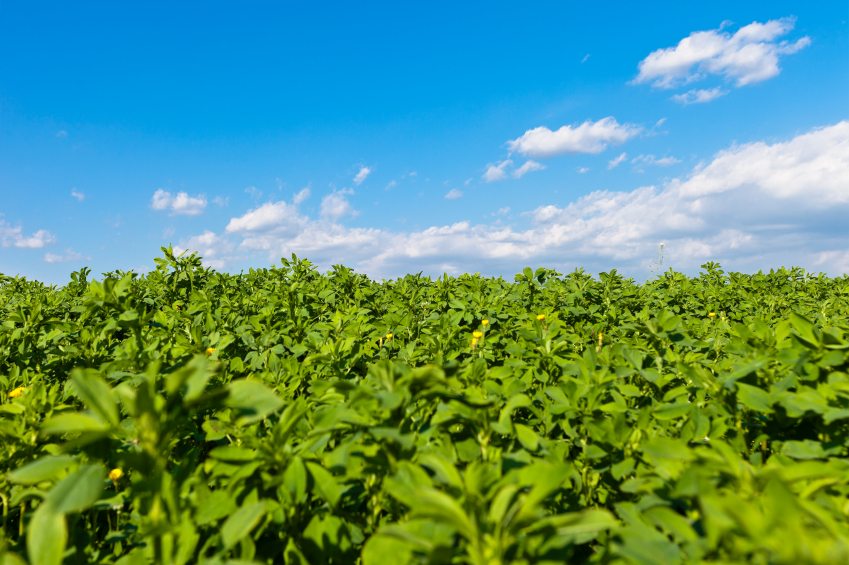Molecular biologists at the University of Massachusetts Amherst who study nitrogen-fixing bacteria in plants have discovered a “double agent” peptide in an alfalfa that may hold promise for improving crop yields without increasing fertilizer use.
In the current early online edition of Proceedings of the National Academy of Sciences, lead author and postdoctoral researcher Minsoo Kim, former undergraduate student Chris Waters, and professor Dong Wang of UMass Amherst’s biochemistry and molecular biology department, with colleagues at the Noble Foundation in Oklahoma, report that alfalfa appears to use an advanced process for putting nitrogen-fixing bacteria, rhizobia, to work more effectively after they are recruited from soil to fix nitrogen in special nodules on plant roots.
As Wang and Kim explain, legumes attract nitrogen-fixing bacteria to their roots from the surrounding soil. Once inside the host plant, rhizobia form nodules on its roots and the plant starts to transform the bacteria into their nitrogen-fixing state. In return for borrowing the rhizobia’s essential enzymes that turn nitrogen into useful ammonia, the plant gives the bacteria fixed carbon, the product of photosynthesis.
In alfalfa, this transformation of bacteria is called differentiation, which Wang likens to domestication, because it makes the bacteria reliant on their plant host. “They are no longer wild and able to live outside the plant,” he says. “I think of it as analogous to domestication of animals by humans.” He adds, “Bacteria that can no longer proliferate as free-living individuals are a bit like slaves at that point, living to serve the plant.”
At the molecular level, plant peptides found exclusively in the nodule, known as NCR peptides, act on the bacteria in the differentiation process. By studying this differentiation process in an alfalfa-clover, Medicago truncatula, the researchers discovered that one of these peptides, DNF4, also known as NCR211, can act as a sort of double agent, Wang says. DNF4 supports nitrogen-fixing bacteria when inside the plant, but its actions can kill free-living bacteria outside.
“At first sight, it may appear perplexing that DNF4/NCR211 supports the survival of differentiating bacteria in plants while also blocking free-living bacteria from forming colonies in culture,” Wang and Kim write.
However, the two activities may actually reflect similar action by NCR211 on bacteria in different physiological states. The dual effect of DNF4/NCR211 may reflect a mechanism to ensure that the rhizobia stay in a properly differentiated state, say the authors. Host control of bacteria differentiation has evolved in multiple lineages of legumes, indicating a possible fitness benefit to the host plant. Furthermore, nodules with differentiated bacteroids returned more benefit to the host. Curiously, the legume with the most economic value, soybean, doesn’t seem to have evolved this strategy, opening possible avenues to improve their yield.
Wang says, “We haven’t solved it all yet,” but discovering NCR211 peptides that maintain bacterial survival inside host cells may turn out to be a key factor in future efforts to improve legume crops without using more fertilizer, which would be an important advance for farming in developing countries and organic farming in the developed world.
“Next we want to find out why this peptide helps the bacteria inside the plant, but it can kill free-living bacteria outside the plant. Why does one molecule function as a double agent?”
Wang says that in a companion study also appearing in PNAS, Price et al. at Brigham Young University recovered a bacterial peptidase capable of degrading host NCR peptides. “This collection of discoveries demonstrates the evolving nature in controlling bacterial differentiation in classical host–microbe mutualism,” Wang and Kim conclude.
Funding for this work was from the University of Massachusetts Amherst.













